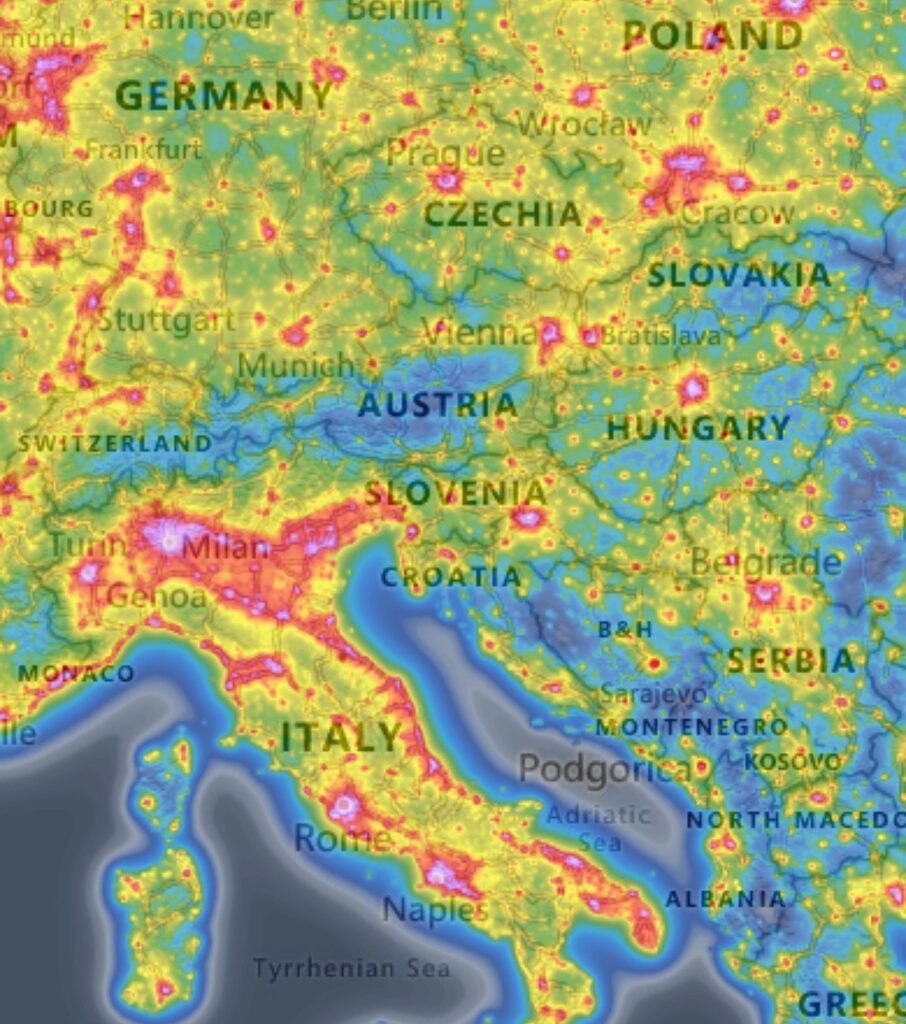
Light pollution is essentially the excessive or misdirected artificial light that disrupts natural darkness. Here’s a breakdown of the science behind it:
Key Aspects:
- Sources of Light Pollution:
- It primarily stems from inefficient or poorly designed outdoor lighting. This includes:
- Streetlights that cast light upward and sideways.
- Illuminated signs and buildings.
- Residential and commercial outdoor lighting.
- Sports field lighting.
- How Light Pollution Works:
- Skyglow: This is the most common form of light pollution. It’s the brightening of the night sky caused by artificial light scattering in the atmosphere.
- Light emitted upward from ground-based sources interacts with particles in the atmosphere (dust, water droplets, etc.).
- This interaction causes the light to scatter in all directions, creating a diffuse glow that obscures the natural night sky.
- Light Trespass: This occurs when unwanted light spills into areas where it’s not needed, such as light from a neighbor’s yard shining into your bedroom window.
- Glare: Excessive brightness that causes visual discomfort. This can be particularly hazardous for drivers.
- Clutter: Bright, confusing, and excessive groupings of light sources, often found in densely populated areas.
- Atmospheric Scattering:
- The atmosphere contains various particles that interact with light.
- These particles scatter light in different directions, which is why the sky appears blue during the day.
- At night, artificial light interacts with these same particles, leading to the scattering that causes skyglow.
- Impacts:
- Astronomical Observation: Light pollution severely hinders astronomical observations, making it difficult to see stars and other celestial objects.
- Ecological Disruption:
- It disrupts the natural behaviors of nocturnal animals, affecting their navigation, reproduction, and feeding patterns.
- It can also affect plant life, disrupting their natural cycles.
- Human Health:
- Exposure to artificial light at night can disrupt the production of melatonin, a hormone that regulates sleep.
- Studies have suggested potential links between light pollution and various health problems.
- Energy Waste:
- Poorly designed lighting wastes energy, contributing to increased carbon emissions.
In essence, light pollution is a consequence of how we design and use artificial light. By understanding the science behind it, we can implement strategies to reduce its impact.
